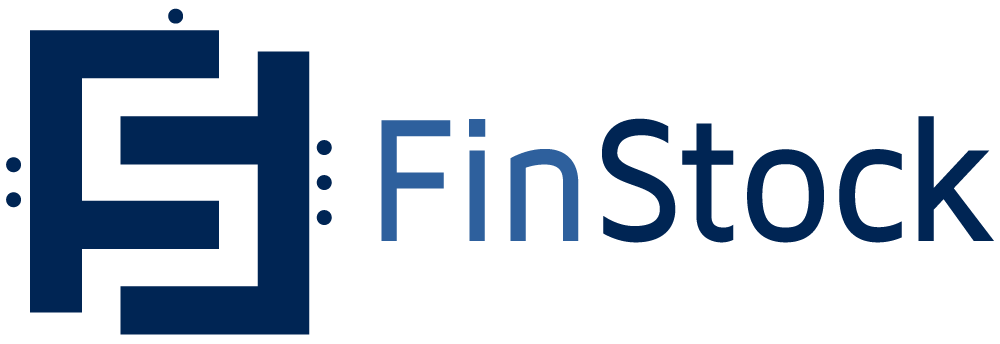In episode eight of Be Ready for Anything, we hear from Mathias Kempe, the Director of Operations at Ratioform. Mathias takes us through Ratioform’s journey from manual planning to an automated system that could adapt to uncertainty. Listen to find out how Ratioform pivoted quickly in the face of unprecedented instability and how it maintains a focus on the future.
Check out the video below.
Or listen and follow on Spotify.
Transcript
This podcast was designed for video or audio enjoyment. The following transcript was created using a combination of automated and human transcription. Please check the audio version before quoting from the transcript.
Mary Vasile: Hi, everyone, welcome back to the Be Ready for Anything podcast. I’m your host, Mary Vasile, and I’m joined today by Mathias Kempe of Ratioform. Mathias is a supply chain expert with significant experience in industrial engineering, logistics, inventory management and procurement at such companies as Amazon, Infineon, Tech Data and of course, Ratioform, where he started as the Head of Procurement in 2018 and is now the Director of Operations. Mathias, thank you so much for joining me today.
Mathias Kempe: Thank you for having me.
Mary Vasile: Absolutely. So we’re going to talk a little bit about Ratioform and how you’ve developed your supply chain management process. So let’s start with some background. Can you tell me a little bit about your company?
Mathias Kempe: Yeah, of course. Ratioform is basically Germany’s leader within the packaging industry. We are trading with goods, packaged goods, or solutions offering to our customers. And basically, we were founded in 1990-no, 1979 basically, and grew up to a reasonable size, I would say. We are located in Munich or close to Munich. Yeah. And that’s basically about the company.
Mary Vasile: All right. So it’s a pretty demanding industry and it’s not without its challenges. So what were the biggest industry and supply chain challenges that Ratioform was facing?
Mathias Kempe: Well, I think we do not have to, to look back so much. So everybody is currently in a very special situation, I would say, and it’s the current pandemic. Everybody tries to manage better than- than less better, yeah. So that’s basically the situation we are in at the moment, which is a big challenge for everybody in every department. And of course, we are trying to, to react as fast as possible. But it’s like driving in the fog at the moment. So you see there are some that can be- something is coming, but you cannot really see it at the moment. And you try to react as fast as possible. So you can name it as the supply peaks you have at the moment. The increasing prices, you are seeing shortages and unplanned demand and so on. So these are the main things in a very dynamic market we are in at the moment, yeah. And in order, of course, to, to fulfill the customer needs, the customers are very demanding. We are giving them a promise to deliver in 24 hours and therefore we need to fulfill.
Mary Vasile: Right, so most companies have some sort of process in place to circumvent problems like this. So can you tell me a little bit about what your planning process used to be and what your experience has been since implementing ToolsGroup’s solution?
Mathias Kempe: We introduced, basically, SO99 as a planning, replenishment, and fulfillment tool in 2015. And before I would say it was, I wasn’t there with the company, but I heard some stories. It was pretty basic. So, little automation, more hands-on approach, working with printouts. Yeah. Using more people experience or somehow gut feeling, rather than real data-driven forecasting, high sophisticated calculations and so on for data points. And also from a stock level perspective, it was more high level. So we also had some overstocks like everybody has, but with the basically introduction, not only the SO99, but at the same time we introduced as well a new ERP system. And they were working dependently on each other. So in conjunction.
And after that, it was more like real data-driven, more automatic, more automatic forecasted fulfillment process. Not that we do any printouts anymore. We could then suddenly do some more parameters setting, set-ups in the system. For instance, setting up stock levels on an item base. Also have a fully-automated calculation of safety stocks and use a lot more variables than we could have used before if we do it in person manually. So basically, this was also the change, why we did it. Also to do the whole ordering replenishment disposition more in a more state-of-the-art way. And we, of course, had some goals as well, of course, to reduce the effort, the time effort to do this. It was a huge step there. And of course, also improve our inventory health. That means having less stock, higher availability. And this was possible with the introduction of SO99.
Mary Vasile: Well, that’s always great to hear and we’re delighted to have been able to partner with you on that. But let’s just revisit something you mentioned at the beginning. How did you navigate COVID and in what ways was ToolsGroup able to help?
Mathias Kempe: Yeah, um, basically, as I said, when you look at recent history, I think no one was in this situation since the last, I don’t know, 70 years. So there’s nothing comparable. So the only thing, and I mentioned it before, it is like more driving on site at the moment and trying to react as fast as possible. And of course, there’s a great team at the moment within ToolsGroup. We have weekly meetings, or we had weekly meetings during the last year supporting us when the system didn’t react correctly. Of course, the whole algorithms there are based on a standard situation, but we are not in the standard situation at the moment. So the support, personal support was very great.
What we did is also. Some- the introduction of so-called COVID classifications. And so they came up with a solution because we said, OK, the forecasting algorithms we are using are too slow, basically. So we need something which is much faster because the situation is changing so fast. And this was done by introducing the so-called COVID classification, which allowed us to manage our forecast in a much shorter period and let the system, allow the system to react much faster to different situations, even if something goes up or down in demand. Also, the increasing lead times we are facing, especially in the second lockdown or wave. Right, before this third wave in Germany, I guess. Helped us here to, with some smart settings within the system, yeah, to still keep our service level at the very high level. Yeah, I can say that our goal is 96.5 percent service level. Yeah, of course, we are not there yet, but we are still above 92 percent at the moment. And this would not have been possible without the tool, actually, if you do it all manually. Of course, it needs manual interaction and you cannot trust it to 100 percent. This is also clear, but still, there’s a big, a big support from the tool and the team, of course, to tackle these issues. And we are getting better, day per day.
Mary Vasile: Well, Mathias, we really value your partnership and we’re glad that we were able to lend you support. I know you mentioned the waves coming in, but hopefully we’ll be coming out of this pretty soon and, you know, can start looking ahead. So can you tell me what your goals are moving forward and what are some of the objectives that Ratioform is setting for the future?
Mathias Kempe: Yeah, basically the goal, the first goal is to get back on track. So everybody is looking forward when this whole pandemic ends and everybody gets vaccinated and the business is going more in a more standard way. But we are aware that we can move in such a situation any time in the future. So this is also a learning from the whole thing, that we need to be prepared. So what we are trying to do, of course, is in order to use the system SO99 even more better, we have to work on the forecast quality. So if you can have a good quality output and of course, it starts also with the data you are sending into the system. If this is also good quality, then you can further automate the whole supply chain or ordering process of the whole supply chain. And you have stability and you have less out-of-stock situations, so you can keep your promises you have made to your customers to serve them, as I mentioned, in 24 hours with a high service level. So this is the main goal to further automate the process, to improve the forecast quality.
And of course, if it’s, at a certain stage, we also want to use this data for our AOP planning. That means annual operating planning to- okay, how will certain items, product groups, develop in the future and then giving this, giving or using these insights, or this data also for marketing actions, for instance, as well, okay. This is extra valuable data. We are using it- not using at the moment, but we want to use in the future.
And of course, a third point is that we are currently using the on-premise solution, but we are also planning or I mean everybody going into the cloud with different systems. So this is also something we are aiming for in the future, to get more cloud-based, to get more, even more from the system and improve the system.
Mary Vasile: Well, these sound like very exciting developments and we’re looking forward to them. Sadly, that’s all the time that we have for today. But thank you so much, Mathias, for taking the time to join me here and to share your story.
Mathias Kempe: Sure. You’re welcome. Thank you very much.
Mary Vasile: And thank you, everyone, for joining us. You can find this and all episodes of this podcast at toolsgroup.com/podcast. You can also find the Be Ready for Anything podcast on Spotify. Be sure to check it out and see you next time.


